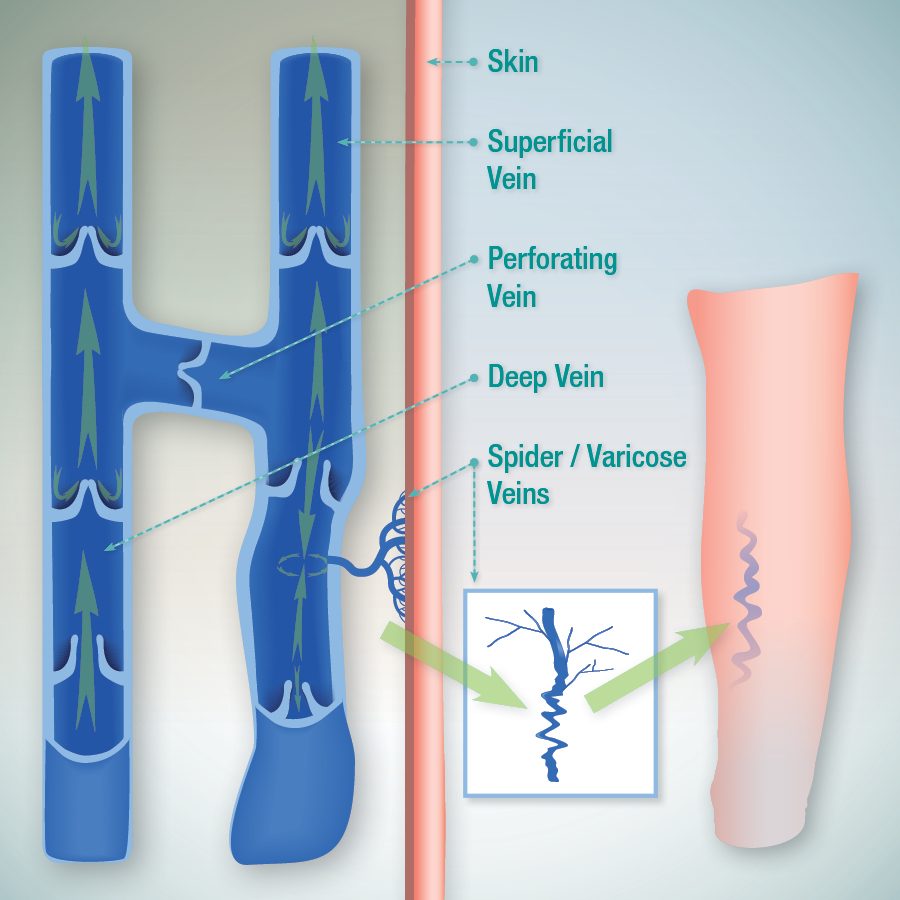Veins Explained
The circulation system moves blood through the body, and veins are an important part of that system. Most veins carry deoxygenated blood from bodily tissue back to the heart, where it receives fresh oxygen. Veins must work against gravity to return blood the heart. The muscles of the leg help that process, and valves within the veins usually keep the moving blood from flowing back down toward the feet. Because the veins in the legs are always fighting gravity and dependent on the valves to prevent backflow, they are more likely to develop an unsightly appearance or even medical problems. Spider veins and varicose veins, for example, occur when blood returning to the heart pools inside a vein, often due to poor function of the valves, causing congestion and enlargement of the vein.
There are different types of veins in your leg:
- Deep veins – veins located deep in the leg, they run next to the arteries. They are responsible for returning 90-95% of venous blood from the leg back to the heart.
- Superficial veins – these veins include the saphenous veins and their branches, reticular veins which are close to the skin and spider veins which are tiny weblike veins in the skin.
- Perforating veins – these veins connect the deep and superficial veins.
- Spider and Varicose Veins – occur when blood returning to the heart pools inside a vein causing congestion and enlargement of the vein.

